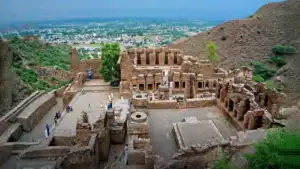ISLAMABAD: Pakistan is facing growing water stress as fresh data from WAPDA shows river inflow and reservoir storage below seasonal norms, despite the onset of monsoons.
Tarbela Dam’s inflow stands at around 193,000 cusecs with outflow near 152,000 cusecs. Mangla Dam on the Jhelum river received around 23,100 cusecs but releases just 9,200 cusecs; indicating water conservation.
Read more: Islamabad Faces Critical Water Shortage: Just 25 Days Left in Khanpur Dam
Similarly, Chashma Barrage reported 237,100 cusecs inflow and 210,000 cusecs outflow. Chenab river at Marala saw inflows of 49,600 cusecs with less than half continuing downstream.
Meanwhile, the Kabul river flow at Nowshera remained steady at 43,500 cusecs.
Reservoir levels were reported at below optimal levels, with Tarbela holding 4.5 million acre-feet, Mangla 3.39 million, and Chashma 167,000 acre-feet – totaling around 8 million acre-feet. This is well under the 10-12 million acre-feet preferred for irrigation, drinking water, and hydropower.
While this may not constitute an immediate crisis but it does point to a looming threat: worsening water shortages in a country of 240 million people. The shortage is driven by below-average rainfall, reduced snowmelt and a 43% projected deficit for the harvest season this year.
Read more: Water Shortage to Reach 60%, IRSA on Provincial Water Sharing
Small-scale farmers in Sindh have reported crop and livestock losses, while urban areas grapple with unreliable and costly water.









